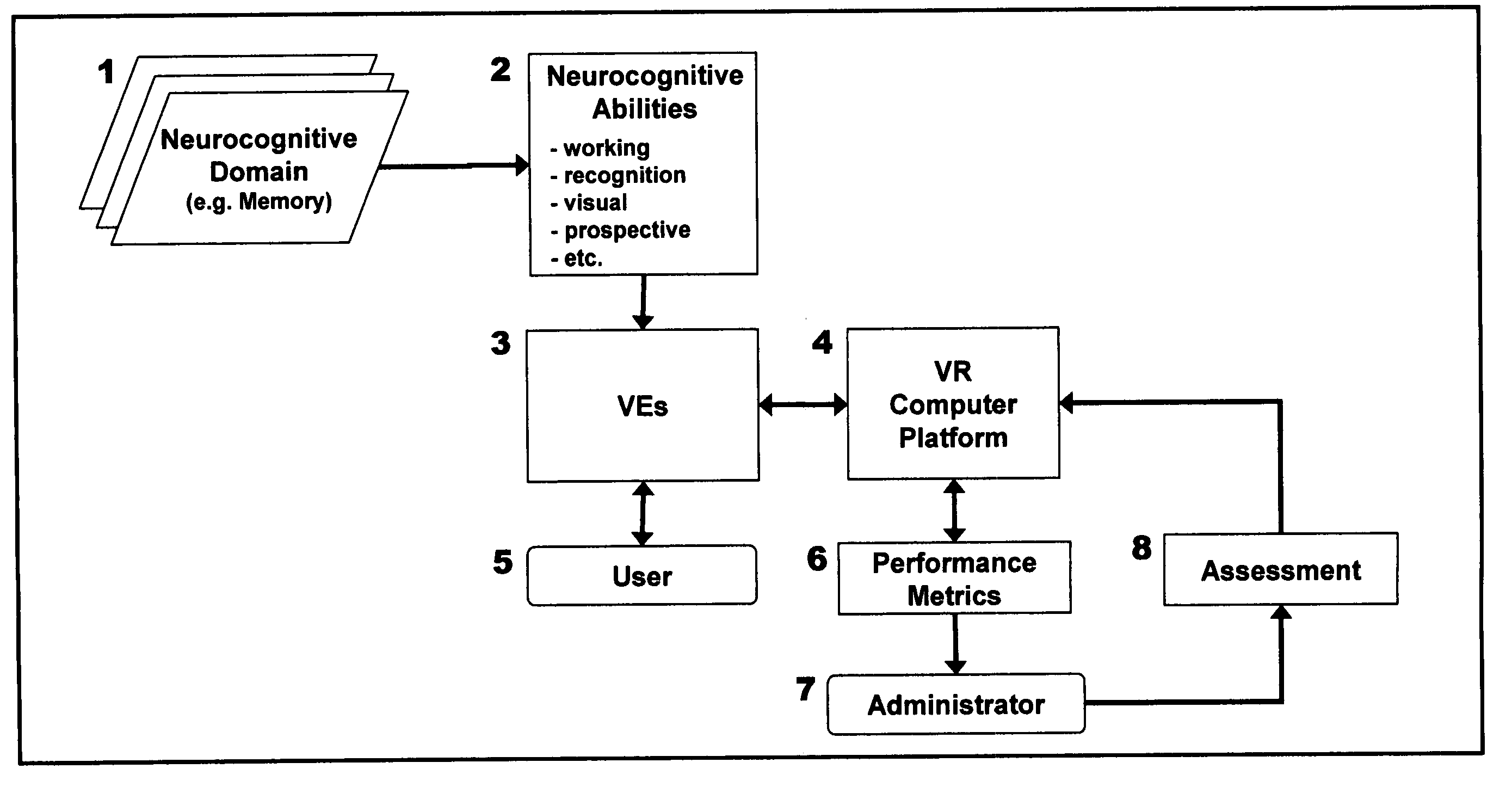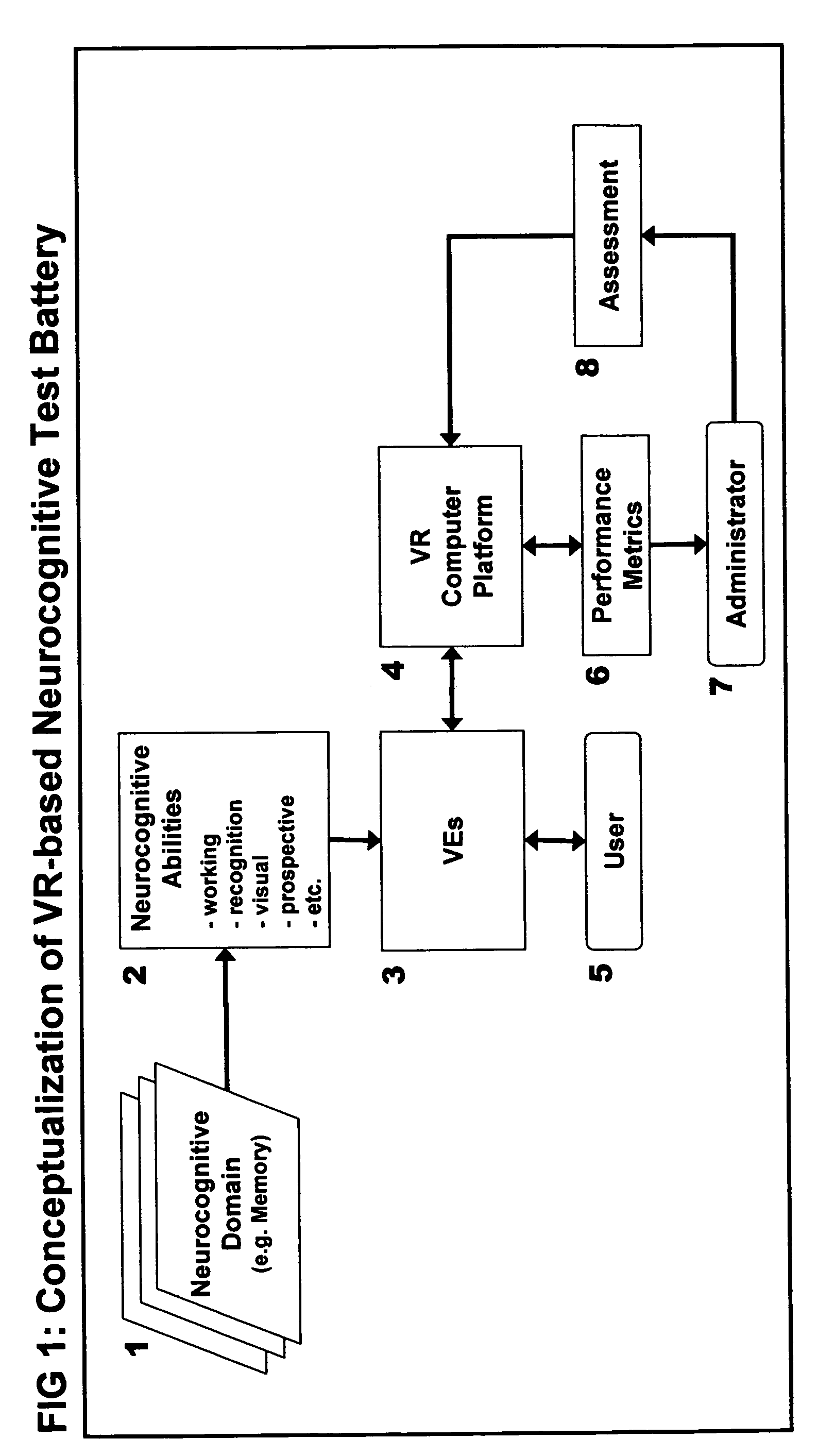Computer-simulated virtual reality environments for evaluation of neurobehavioral performance
a virtual reality environment and computer simulation technology, applied in electric/magnetic computing, instruments, analogue processes for specific applications, etc., to achieve the effect of improving the specificity of a clinical diagnosis or rehabilitation strategy, and increasing or reducing the difficulty of test protocols
- Summary
- Abstract
- Description
- Claims
- Application Information
AI Technical Summary
Benefits of technology
Problems solved by technology
Method used
Image
Examples
example 1
Office Courier Task
[0073] A method and system of the present invention can be used to fundamental advantage to create ecologically valid, ‘pure’ tests of mental flexibility. In psychological literature, an ecologically valid test is understood to elicit behavior that generalizes well to that associated with the activities of daily life. Traditional neuropsychological tests of executive functions, such as mental flexibility, often lack ecological validity and specificity with respect to testing cognitive function. Measurements of performance related to these tasks are often confounded by the involvement of multiple cognitive processes. For instance, the Wisconsin Card Sorting Test (WCST) has long been a widely-used test of frontal lobe function. In this test, the test subject is shown four cards placed on a table. The cards show pictures of symbols of different shape, color, and number. There are four different possibilities for number (1,2,3,4), color (red, green, blue, yellow), an...
example 2
Assembly Line Task
[0077] The Assembly Line Task (ALT) was designed for attention assessment and training purposes in individuals with attention deficits and disorders, such as those that occur following traumatic brain injury. In the method of the invention, the conveyor belt(s) is (are) the focus of a series of tasks of increasing complexity requiring divided and sustained attention. According to the invention, the goal of the ALT is to improve a subject's attention span under low arousal conditions, in terms of reduced length of time for completion of increasingly complex tasks. The level of difficulty of the series of tasks can be easily tailored to the needs of each patient, thus maximizing their effectiveness. The concreteness of the tasks also makes the attentional gains realized in the test more readily generalizable to real-world activities. As an assessment tool, performance on different difficulty levels of the ALT can be used in comparison with a normative database inclu...
PUM
 Login to View More
Login to View More Abstract
Description
Claims
Application Information
 Login to View More
Login to View More - R&D
- Intellectual Property
- Life Sciences
- Materials
- Tech Scout
- Unparalleled Data Quality
- Higher Quality Content
- 60% Fewer Hallucinations
Browse by: Latest US Patents, China's latest patents, Technical Efficacy Thesaurus, Application Domain, Technology Topic, Popular Technical Reports.
© 2025 PatSnap. All rights reserved.Legal|Privacy policy|Modern Slavery Act Transparency Statement|Sitemap|About US| Contact US: help@patsnap.com



